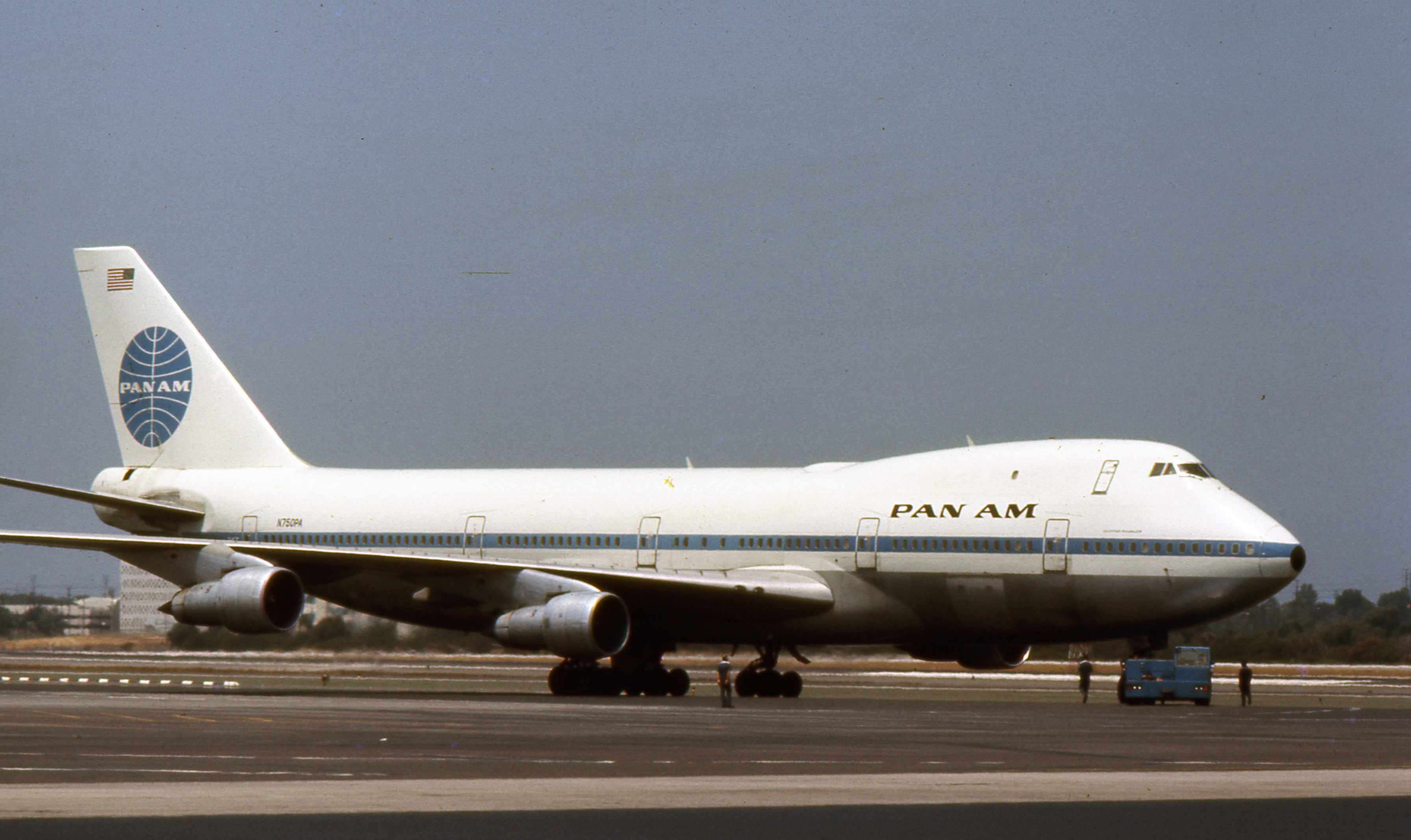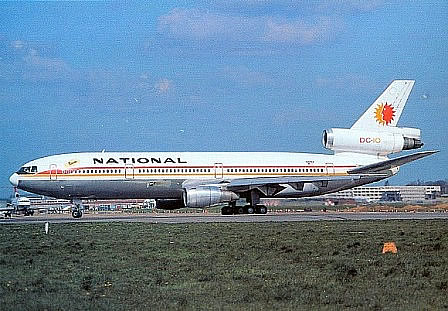The American company Boeing was already successful in the commercial aviation market throughout the late 1960s with its 707 and 727 narrow body aircraft, but was pushing to create a widebody (meaning airplanes with more than a single isle) commercial aircraft that would cross oceans and continents while carrying twice as many passengers.
The Boeing 747 entered service in January of 1970 with Pan American World Airways, powered by 4 high-bypass turbofan engines (more fan thrust than jet thrust) revolutionizing long range aviation and launching the age of widebody jets, or “jumbo jets”. Seating 400 passengers, it significantly cut down seat-mile costs, making it the cheapest airplane to service and fly in the industry despite its large size.
 |
| Boeing 747 |
Competitors to the 747 soon entered the market: the McDonnell Douglas DC-10 and the Lockheed-1011 TriStar. Both were trijets (3 engines, with the third engine stuck in the tail of the airplane. Having two engines, which were less powerful than present day jet engines, would not be enough to power the widebody jets.) The TriStar made the world’s first transcontinental fully automatic flight. The DC-10 and the TriStar provided the demand for smaller yet efficient airplanes, leaving the 747 as the preferred plane for long transcontinental flights.
 |
| McDonnell Douglas DC-10 |
 |
| L1011 TriStar |
Overall, the introduction of the widebody made flying accessible for millions of people who previously could not afford it. With flights becoming more frequent, airlines updated liveries and developed new uniforms for the flight crew, reflecting fashion trends from the decade. New engine and soundproofing designs made flying more comfortable and relaxing; flights in the 70s began to resemble the modern flying experience. Tourism and international business flourished as well as other industries, and airlines began making profit from the new steady flow of customers. The 70s revolutionized the air travel industry and made the world a smaller place for working class people.
Sources: https://airandspace.si.edu/exhibitions/america-by-air/online/jetage/jetage06.cfm
https://www.ainonline.com/aviation-news/aviation-international-news/2008-08-04/century-review-1970s
https://simpleflying.com/1970s-widebody-aircraft/
https://www.flysfo.com/media/press-releases/widebody-launch-jumbojets-early-1970s
https://www.airlinerspotter.com/mcdonnell-douglas-dc10-md10-md11-spotting-guide.htm
https://www.sfomuseum.org/exhibitions/fashion-flight-airline-uniform-design/detail#2
https://upload.wikimedia.org/wikipedia/commons/3/32/Pan_American_World_Airways_Boeing_747_N750PA_01.jpg

I learned a lot about air travel in the 70s and how air travel started to resemble modern air travel from this post! Another way airlines competed for customers was with the services they provided. For example in the early 70s southwest was a small airline and could not compete with bigger airlines. So, to bring in customers they offered customers a full bottle of premium alcohol that the passenger could take home after the flight. This was effective in helping Southwest cement itself in the industry.
ReplyDeletesource: https://www.usatoday.com/story/travel/roadwarriorvoices/2016/02/14/was-air-travel-in-the-1970s-really-as-groovy-and-boozy-as-we-remember/83199262/